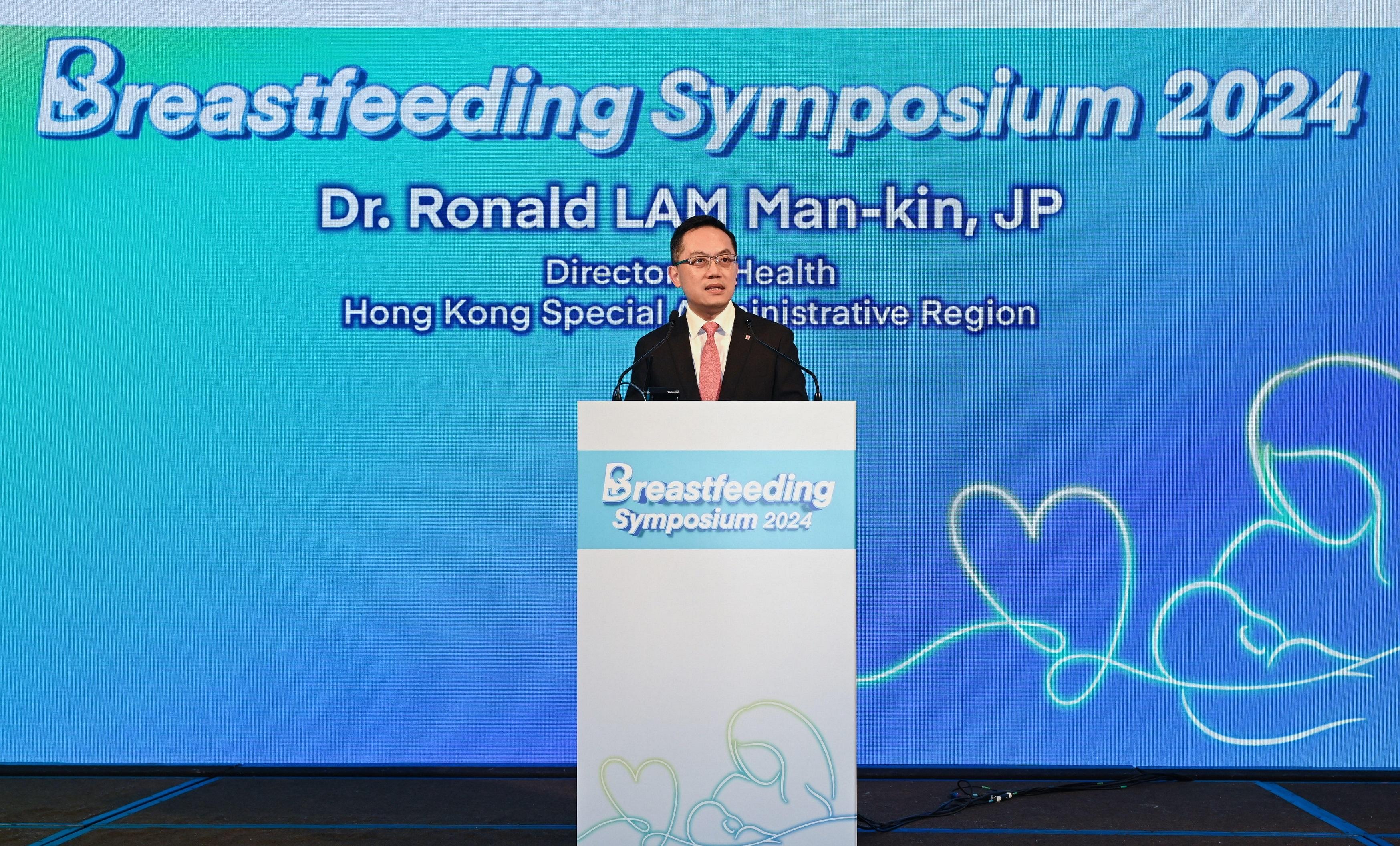​To promote breastfeeding and garner support from the healthcare sector, the Department of Health (DH), in collaboration with the Hospital Authority, the Hong Kong Private Hospitals Association, the Hong Kong Committee for United Nations Children’s Fund (UNICEF), and the Baby Friendly Hospital Initiative Hong Kong Association, today (November 23) organised the Breastfeeding Symposium 2024, which brought together local and overseas experts from Sweden, Singapore and Australia to share with representatives of the public and private healthcare sectors, healthcare professionals and other stakeholders the various issues related to breastfeeding, including professional support and the Baby Friendly Hospital Initiative jointly promoted by the World Health Organization (WHO) and the UNICEF.
International literature and research showed breastmilk is the ideal food for infants. Breastmilk is safe, clean and contains antibodies which can help prevent many common childhood illnesses. Breastfed children perform better in intelligence tests, are less likely to be overweight or obese, and are less prone to have diabetes later in life.
Officiating at the symposium, the Director of Health, Dr Ronald Lam, said, “The Government has all along been promoting, protecting and supporting breastfeeding through a multi-pronged approach. The promotion of breastfeeding policy relies on the co-operation of different stakeholders in the community, and the support of healthcare professionals and medical institutions is particularly important.”
The Baby Friendly Hospital Initiative is a global initiative launched by the WHO and the UNICEF, aiming to bring every baby the best start in life by creating a supportive atmosphere for breastfeeding. The Baby Friendly Hospital Initiative includes a Baby-Friendly Health Facility assessment and accreditation programme to assess and recognise medical organisations which have successfully promoted, supported and safeguarded breastfeeding.
Dr Lam said, “The first few hours and days after birth are critical for establishing lactation and success of breastfeeding. All eight public hospitals with obstetrics departments in Hong Kong have been accredited as Baby Friendly Hospitals (BFHs). Two private hospitals providing delivery services have also started the BFH accreditation process, with one of them already accredited. In 2023, about 40 per cent of local babies were born in private hospitals. The Government calls upon more private hospitals to initiate the BFH accreditation process. To further strengthen and consolidate the baby-friendly measures in local maternity hospitals, the Government has set up a dedicated working group under the Committee on Promotion of Breastfeeding, in a bid to make breastfeeding the mainstream of infant and young child feeding in Hong Kong. Besides, to comprehensively enhance the professional support provided by health care facilities to breastfeeding families, the DH has expedited the accreditation process for Baby-Friendly Maternal and Child Health Centres (MCHCs). Currently, there are eight Baby-Friendly MCHCs, while the remaining 20 MCHCs are undergoing the accreditation process.
In addition, professional counselling services can ensure that mothers and their families receive adequate breastfeeding support, along with the information and advice, to build the confidence they need to nourish their babies optimally. To this end, the DH organised workshops two days prior to the symposium to enhance the capacity of healthcare professionals in both the public and private sectors in this area.
The Government will continue to take forward a series of breastfeeding promotion initiatives, including:
- encouraging the implementation of the Breastfeeding Friendly Workplace policy. DH has issued guidelines for employers and employees with specific advice on supporting breastfeeding.
- promoting public places as Breastfeeding Friendly Premises. Since the Government’s introduction of a mandatory requirement in the sale conditions of government land sale sites for new commercial developments in 2017 for developers to provide babycare rooms and lactation rooms (LRs), the Government has already included relevant requirements in the sale conditions for over 20 government land sales sites for new commercial developments as at October 31 this year. Meanwhile, the Government has also mandated the provision of babycare facilities and LRs in some newly completed government premises. As of October 31 this year, there were more than 400 babycare rooms in government properties.
- “The Chief Executive’s 2023 Policy Address” announced the establishment of a breastmilk bank and formulating the related mechanism for breastmilk donation in 2025 to provide breastmilk for infants and young children who cannot be breastfed by their biological mothers, and especially to minimise the chance of serious illness in premature or severely-ill babies. The breastmilk bank is expected to be officially launched in the first quarter of 2025.
The Government will continue to work closely with different sectors of the society to strengthen the professional support for breastfeeding mothers in the healthcare sector and step up publicity on breastfeeding in the community through various channels, with a view to fostering a proactive culture of support for breastfeeding in the community and creating a friendly environment conducive to breastfeeding.
The Breastfeeding Symposium 2024 provided a golden opportunity for healthcare professionals to share and exchange views on areas related to the enhancement of professional support for breastfeeding and to exchange experiences, data and views on the enhancement of professional support for breastfeeding mothers.
read more






